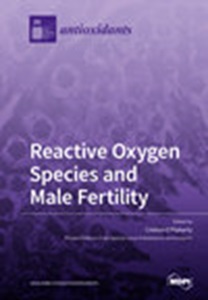槲寄生胆乙醇提取物通过减轻皮肤成纤维细胞的炎症和氧化损伤加速伤口愈合
IF 6
2区 医学
Q1 BIOCHEMISTRY & MOLECULAR BIOLOGY
引用次数: 0
摘要
槲寄生(落叶乔木科)坚果胆是一种传统的亚洲药物,以其治疗伤口和皮肤疾病的功效而闻名。虽然这种果胆提取物在加速糖尿病动物模型的伤口愈合方面显示出良好的效果,但人们对其作用机制,尤其是对氧化还原平衡的影响,仍然知之甚少。本研究旨在探讨鹅掌楸胆乙醇提取物(QIG)对成纤维细胞伤口愈合的影响和机制,重点是其对氧化应激的调节作用。以过氧化氢(H2O2)处理的 L929 细胞作为氧化损伤成纤维细胞的体外模型。QIG 具有很强的抗氧化活性,其 2,2-二苯基-1-苦基肼(DPPH)、2,2′-偶氮-双(3-乙基苯并噻唑啉-6-磺酸(ABTS)和铁还原抗氧化力(FRAP)测定值分别为 305.43 ± 7.48、508.94 ± 15.12 和 442.08 ± 9.41 µM 托罗克斯当量(TE)/µg。H2O2 水平升高会显著降低 L929 细胞的存活率,50% 的致死浓度为 1.03 mM。QIG 以剂量依赖的方式减轻了 H2O2 诱导的细胞毒性,在治疗前、治疗后和联合治疗中均显示出保护作用。QIG 能明显减少 H2O2 诱导的细胞内活性氧生成和炎症相关基因的表达(p < 0.05)。此外,与单独使用 H2O2 处理相比,25 µg/mL 的 QIG 能明显改善 H2O2 处理的 L929 细胞的伤口闭合,提高了约 9.4 倍(p < 0.05)。这些研究结果表明,QIG 通过调节氧化应激和炎症反应,在伤口愈合方面具有潜在的治疗用途。本文章由计算机程序翻译,如有差异,请以英文原文为准。
Quercus infectoria Gall Ethanolic Extract Accelerates Wound Healing through Attenuating Inflammation and Oxidative Injuries in Skin Fibroblasts
Quercus infectoria Olivier (Fagaceae) nutgall, a traditional Asian medicine, is renowned for its efficacy in treating wounds and skin disorders. Although the gall extract has shown promising results in accelerating wound healing in diabetic animal models, its mechanisms, particularly the effects on redox balance, remain poorly understood. This study aims to investigate the effects and mechanisms of Q. infectoria gall ethanolic extract (QIG) on wound healing in fibroblasts, with a specific emphasis on its modulation of oxidative stress. Hydrogen peroxide (H2O2)-treated L929 cells were used as an in vitro model of oxidation-damaged fibroblasts. QIG exhibited potent antioxidant activity with 2,2-diphenyl-1-picrylhydrazyl (DPPH), 2,2′-azino-bis(3-ethylbenzothiazoline-6-sulfonic acid (ABTS), and ferric reducing antioxidant power (FRAP) assay values of 305.43 ± 7.48, 508.94 ± 15.12, and 442.08 ± 9.41 µM Trolox equivalents (TE)/µg, respectively. Elevated H2O2 levels significantly reduced L929 cell viability, with a 50% lethal concentration of 1.03 mM. QIG mitigated H2O2-induced cytotoxicity in a dose-dependent manner, showing protective effects in pre-, post-, and co-treatment scenarios. QIG significantly reduced H2O2-induced intracellular reactive oxygen species production and inflammation-related gene expression (p < 0.05). Additionally, at 25 µg/mL, QIG remarkably improved wound closure in H2O2-treated L929 cells by approximately 9.4 times compared with the H2O2 treatment alone (p < 0.05). These findings suggest QIG has potential therapeutic applications in wound healing, mediated through the regulation of oxidative stress and inflammatory response.
求助全文
通过发布文献求助,成功后即可免费获取论文全文。
去求助
来源期刊

Antioxidants
Biochemistry, Genetics and Molecular Biology-Physiology
CiteScore
10.60
自引率
11.40%
发文量
2123
审稿时长
16.3 days
期刊介绍:
Antioxidants (ISSN 2076-3921), provides an advanced forum for studies related to the science and technology of antioxidants. It publishes research papers, reviews and communications. Our aim is to encourage scientists to publish their experimental and theoretical results in as much detail as possible. There is no restriction on the length of the papers. The full experimental details must be provided so that the results can be reproduced. Electronic files and software regarding the full details of the calculation or experimental procedure, if unable to be published in a normal way, can be deposited as supplementary electronic material.
 求助内容:
求助内容: 应助结果提醒方式:
应助结果提醒方式:


